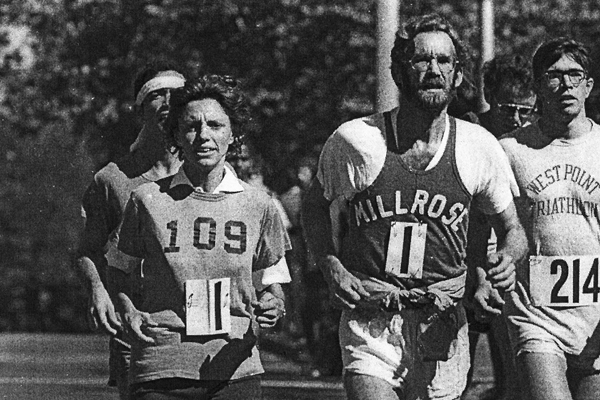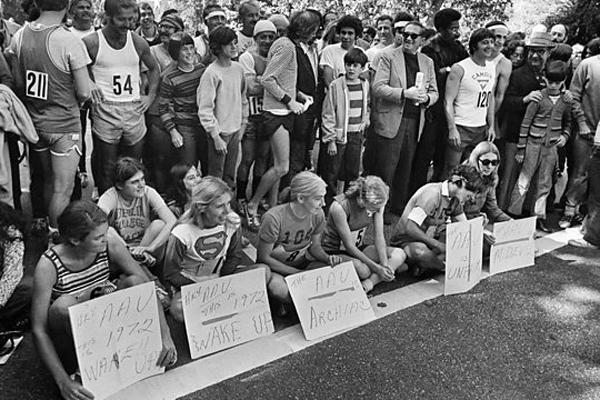Message From Our President

Dear Students, Faculty, Staff and Friends,
I am pleased to present to you this Guide to our plans for the upcoming fall semester and reopening of our campuses. In form and in content, this coming semester will be like no other. We will live differently, work differently and learn differently. But in its very difference rests its enormous power.
The mission of Yeshiva University is to enrich the moral, intellectual and spiritual development of each of our students, empowering them with the knowledge and abilities to become people of impact and leaders of tomorrow. Next year’s studies will be especially instrumental in shaping the course of our students’ lives. Character is formed and developed in times of deep adversity. This is the kind of teachable moment that Yeshiva University was made for. As such, we have developed an educational plan for next year that features a high-quality student experience and prioritizes personal growth during this Coronavirus era. Our students will be able to work through the difficulties, issues and opportunities posed by our COVID-19 era with our stellar rabbis and faculty, as well as their close friends and peers at Yeshiva.
To develop our plans for the fall, we have convened a Scenario Planning Task Force made up of representatives across the major areas of our campus. Their planning has been guided by the latest medical information, government directives, direct input from our rabbis, faculty and students, and best practices from industry and university leaders across the country. I am deeply thankful to our task force members and all who supported them for their tireless work in addressing the myriad details involved in bringing students back to campus and restarting our educational enterprise.
In concert with the recommendations from our task force, I am announcing today that our fall semester will reflect a hybrid model. It will allow many students to return in a careful way by incorporating online and virtual learning with on-campus classroom instruction. It also enables students who prefer to not be on campus to have a rich student experience by continuing their studies online and benefitting from a full range of online student services and extracurricular programs.
In bringing our students back to campus, safety is our first priority. Many aspects of campus life will change for this coming semester. Gatherings will be limited, larger courses will move completely online. Throughout campus everyone will need to adhere to our medical guidelines, including social distancing, wearing facemasks, and our testing and contact tracing policies. Due to our focus on minimizing risk, our undergraduate students will begin the first few weeks of the fall semester online and move onto the campus after the Jewish holidays. This schedule will limit the amount of back and forth travel for our students by concentrating the on-campus component of the fall semester to one consecutive segment.
Throughout our planning, we have used the analogy of a dimmer switch. Reopening our campuses will not be a simple binary, like an on/off light switch, but more like a dimmer in which we have the flexibility to scale backwards and forwards to properly respond as the health situation evolves. It is very possible that some plans could change, depending upon the progression of the virus and/or applicable state and local government guidance.
Before our semester begins, we will provide more updates reflecting our most current guidance. Please check our website, yu.edu/fall2020 for regular updates. We understand that even after reading through this guide, you might have many additional questions, so we will be posting an extensive FAQ section online as well. Additionally, we will also be holding community calls for faculty, students, staff and parents over the next couple of months.
Planning for the future during this moment has certainly been humbling. This Coronavirus has reminded us time and time again of the lessons from our Jewish tradition that we are not in full control of our circumstances. But our tradition also teaches us that we are in control of our response to our circumstances. Next semester will present significant challenges and changes. There will be some compromises and minor inconveniences--not every issue has a perfect solution. But faith and fortitude, mutual cooperation and resilience are essential life lessons that are accentuated during this period. And if we all commit to respond with graciousness, kindness, and love, we can transform new campus realities into profound life lessons for our future.
Deeply rooted in our Jewish values and forward focused in preparing for the careers and competencies of the future, we journey together with you, our Yeshiva University community, through these uncharted waters. Next year will be a formative year in the lives of our students, and together we will rise to the moment so that our students will emerge stronger and better prepared to be leaders of the world of tomorrow.
Best Wishes,
Ari Berman

 Where do you think the co-founder of the NYC Marathon has an office?
Not in Queens, the Bronx, Brooklyn, Staten Island or even mid-Manhattan, nor anywhere along the route where thousands of participants race each year.
It’s in Furst Hall, Room 026B, on the Wilf Campus of Yeshiva University, also known as the office of biology professor Vincent Chiappetta.
In that office are pictures from the days when Chiappetta was creating what would become the most well-known and respected marathon in the world. His office is a fascinating blend of marathon memorabilia and the world of science.
His love for running started in the 1950s, oddly enough, on the basketball court. He and two friends made the team at James Monroe High School in the Bronx, but before long, “the coach threw us out,” probably due to politics, he adds. He switched to the track team, which he felt had a much nicer coach, and stayed on the team because “a smart coach can make all the difference.”
He took his love for running, supported by an academic scholarship, to New York University, then located in his home neighborhood of the Bronx. When not studying for his bachelor’s and master’s degrees in philosophy, he went running near Yankee Stadium, where he met members of a local roadrunners group. In 1958, he helped found the New York Road Runners Club, the local branch of the Road Runners Club of America (now known as the New York Road Runners or NYRR). His motivation for founding the group was quintessential Chiappetta: “I got involved because I didn’t like the existing rules of the sport; the rules were against the athlete.” Before long, the club went national, organizing races throughout the United States.
He continued his involvement in the administrative side of running, along with his active competitive running. Eventually, he became the president of the organization and the Roadrunners Club of America. Soon after, he received a phone call from someone named Fred Lebow. “Fred was just a guy who liked to run,” and he asked me ‘why aren’t you running in Central Park’?” Chiappetta also felt it was a perfect place to run, but said John Lindsay, the then-mayor of New York City, was against it.
The word “no” was not in either Chiappetta’s or Lebow’s vocabulary, so, with much persistence, chutzpah and the help of local politicians, they cut through the red tape and were finally able to form the New York City Marathon and run it through the famed park.
Chiappetta worked intensely to get many unnecessary regulations changed, including the one prohibiting women to participate with the same set of rules as men. “We encouraged women to join us and helped break the ice for them. The women who ran with us were true pioneers,” he said. In the early 1970s, women were not treated equally by other running organizations, and it wasn’t until 1972 that the rule was changed allowing women to run in the marathon in an official capacity. Nevertheless, women were still required to start their race ten minutes before the men.
Chiappetta and his fellow organizers in the Roadrunners Club would have none of that: “Our philosophy was that running was for everyone.” He admires those female pioneers and enjoys telling the story of what happened in the 1972 race. “The gun went off ten minutes early to start the women’s race, but instead, the women sat down at the starting line in protest, holding signs demanding equal treatment.” The protest was quite a hit, making waves inside and outside the running community.
Where do you think the co-founder of the NYC Marathon has an office?
Not in Queens, the Bronx, Brooklyn, Staten Island or even mid-Manhattan, nor anywhere along the route where thousands of participants race each year.
It’s in Furst Hall, Room 026B, on the Wilf Campus of Yeshiva University, also known as the office of biology professor Vincent Chiappetta.
In that office are pictures from the days when Chiappetta was creating what would become the most well-known and respected marathon in the world. His office is a fascinating blend of marathon memorabilia and the world of science.
His love for running started in the 1950s, oddly enough, on the basketball court. He and two friends made the team at James Monroe High School in the Bronx, but before long, “the coach threw us out,” probably due to politics, he adds. He switched to the track team, which he felt had a much nicer coach, and stayed on the team because “a smart coach can make all the difference.”
He took his love for running, supported by an academic scholarship, to New York University, then located in his home neighborhood of the Bronx. When not studying for his bachelor’s and master’s degrees in philosophy, he went running near Yankee Stadium, where he met members of a local roadrunners group. In 1958, he helped found the New York Road Runners Club, the local branch of the Road Runners Club of America (now known as the New York Road Runners or NYRR). His motivation for founding the group was quintessential Chiappetta: “I got involved because I didn’t like the existing rules of the sport; the rules were against the athlete.” Before long, the club went national, organizing races throughout the United States.
He continued his involvement in the administrative side of running, along with his active competitive running. Eventually, he became the president of the organization and the Roadrunners Club of America. Soon after, he received a phone call from someone named Fred Lebow. “Fred was just a guy who liked to run,” and he asked me ‘why aren’t you running in Central Park’?” Chiappetta also felt it was a perfect place to run, but said John Lindsay, the then-mayor of New York City, was against it.
The word “no” was not in either Chiappetta’s or Lebow’s vocabulary, so, with much persistence, chutzpah and the help of local politicians, they cut through the red tape and were finally able to form the New York City Marathon and run it through the famed park.
Chiappetta worked intensely to get many unnecessary regulations changed, including the one prohibiting women to participate with the same set of rules as men. “We encouraged women to join us and helped break the ice for them. The women who ran with us were true pioneers,” he said. In the early 1970s, women were not treated equally by other running organizations, and it wasn’t until 1972 that the rule was changed allowing women to run in the marathon in an official capacity. Nevertheless, women were still required to start their race ten minutes before the men.
Chiappetta and his fellow organizers in the Roadrunners Club would have none of that: “Our philosophy was that running was for everyone.” He admires those female pioneers and enjoys telling the story of what happened in the 1972 race. “The gun went off ten minutes early to start the women’s race, but instead, the women sat down at the starting line in protest, holding signs demanding equal treatment.” The protest was quite a hit, making waves inside and outside the running community.
 Vincent Chiappetta (third from right) running in 1972. To his left is Nina Kuscsik, the female winner of the marathon and one of the six women who staged the protest.
Vincent Chiappetta (third from right) running in 1972. To his left is Nina Kuscsik, the female winner of the marathon and one of the six women who staged the protest.
 Six women runners staged a sit-down demonstration to demand equality for female athletes in 1972.
Six women runners staged a sit-down demonstration to demand equality for female athletes in 1972.